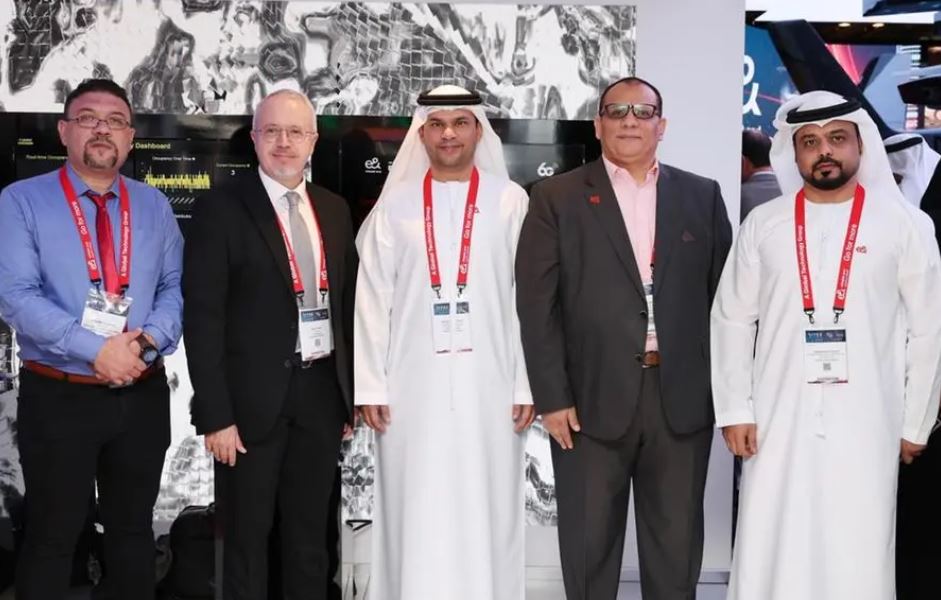A Milestone in Regional Tech Innovation
The United Arab Emirates has achieved a defining moment in telecommunications history by becoming the first nation in the Middle East to successfully conduct a 6G trial. This groundbreaking experiment, conducted by e& (formerly Etisalat) in partnership with New York University Abu Dhabi (NYUAD), reached a record-breaking 145 gigabits per second (Gbps) throughput using Terahertz (THz) spectrum frequencies. The milestone places the UAE among the ranks of early global pioneers alongside Japan, South Korea, Finland, and the United States who are actively exploring the boundaries of ultra-fast wireless communication systems. The 6G test signals not just a technical leap, but a strong affirmation of the UAE’s determination to become a leader in next-generation connectivity infrastructure.
This accomplishment underscores the UAE’s broader vision to position itself as a nexus of technological innovation and a global digital economy hub. It aligns closely with national strategies such as the UAE Centennial 2071 and We the UAE 2031, both of which emphasize science, digital transformation, and knowledge-based growth. By breaking the 6G barrier in the region, the UAE demonstrates how small yet visionary nations can redefine global technology hierarchies through strategic foresight, long-term R&D investments, and cross-sectoral collaboration between academia and industry. The success of this trial not only cements the UAE’s status as an innovation leader in the Arab world but also marks the beginning of a new era in Middle Eastern technological diplomacy.
Why 6G & Terahertz Bands?
The transition from 5G to 6G is not merely about faster speeds; it represents a fundamental redesign of communication ecosystems. While 5G revolutionized connectivity by enabling low-latency, high-capacity links for IoT and autonomous systems, 6G aspires to integrate communications with intelligence, sensing, and computing into one seamless framework. It envisions a world where devices and infrastructure are not only connected but context-aware capable of perceiving, analyzing, and responding to their environment in real time. This concept of “intelligent connectivity” will transform industries such as healthcare, mobility, logistics, and defense by embedding cognition and situational awareness directly into the network fabric.
Central to achieving this vision is the use of the Terahertz (THz) frequency spectrum, which spans roughly 100 GHz to 3 THz. These ultra-high frequencies unlock bandwidths far exceeding what 5G millimeter-wave systems can offer, allowing theoretical speeds above 1 Tbps. However, harnessing THz frequencies is notoriously complex due to challenges like signal attenuation, line-of-sight restrictions, and atmospheric absorption. The UAE’s successful demonstration is therefore not just a matter of speed — it’s a proof of concept that technological barriers can be overcome through adaptive beamforming, multi-antenna systems, AI-driven calibration, and advanced coding algorithms.
By achieving 145 Gbps in a live environment, the UAE’s researchers have proven that THz signals can be transmitted stably and efficiently in real-world conditions. This trial serves as a major step toward global 6G standardization under organizations such as the 3rd Generation Partnership Project (3GPP) and the International Telecommunication Union (ITU). The findings could influence early-stage specifications for 6G deployments expected by the end of this decade, with the UAE contributing directly to defining the framework of the world’s next communication frontier.
What Was Demonstrated
The trial focused on validating three essential pillars of 6G performance speed, spectral efficiency, and reliability. Engineers from e& and NYU Abu Dhabi collaborated to develop a specialized THz radio system that combined ultra-precise synchronization mechanisms, AI-assisted modulation techniques, and intelligent antenna arrays. The system sustained an unprecedented 145 Gbps throughput, setting a regional record that dwarfs existing 5G capabilities. More importantly, it demonstrated network stability and signal consistency across varying environmental conditions, proving the feasibility of deploying THz networks at scale.
A major innovation explored in the trial was Integrated Sensing and Communication (ISAC), a hallmark of 6G architecture. Unlike previous generations focused solely on connectivity, ISAC allows the same communication waves to sense their environment detecting object location, movement, and even surface texture. This functionality opens revolutionary applications across domains such as autonomous transportation, industrial robotics, defense surveillance, and smart manufacturing. The idea that network signals can “sense” physical realities blurs the line between communication and perception, effectively creating a digital nervous system for the modern world.
Complementing the trial, researchers also released a technical white paper titled “Building the Fabric of 6G: Spectrum Frontiers and Enabling Technologies.” The document outlines the future foundation of 6G systems, emphasizing AI-native architectures, Reconfigurable Intelligent Surfaces (RIS), and edge-native computing paradigms. Through these contributions, the UAE has transitioned from being a regional adopter of global technologies to becoming an active contributor to the global scientific and standardization ecosystem — shaping the intellectual and technical groundwork of future telecommunications.
Strategic & Economic Implications
UAE & Regional Leadership in Tech
From a strategic standpoint, this milestone is deeply aligned with the UAE’s broader Digital Economy Strategy 2032, which aims to double the digital sector’s GDP contribution to 19.4%. The 6G breakthrough directly accelerates that ambition by positioning the UAE as a first-mover in next-generation telecom R&D. It reflects a deliberate national strategy that intertwines innovation policy, foreign investment, and human capital development ensuring that scientific progress translates into tangible economic value.
This success also amplifies the UAE’s reputation as the Middle East’s innovation hub, capable of hosting advanced research and commercialization ecosystems. Building upon initiatives such as Abu Dhabi’s Hub71, Dubai Future Foundation, and the UAE AI Strategy 2031, the 6G program consolidates the country’s role as a bridge between East and West in technological exchange. The anticipated influx of investments in semiconductors, photonics, and edge computing will stimulate new job creation, research institutions, and intellectual property ownership within the UAE. In this sense, the 6G initiative is not merely scientific it’s geo-economic, redefining the UAE’s position within the global digital supply chain.
Moreover, this development could ignite a regional innovation race. Saudi Arabia, Qatar, and Israel are expected to accelerate their 6G research agendas, potentially transforming the Gulf Cooperation Council (GCC) into one of the world’s fastest-developing connectivity corridors. This clustering effect may foster cross-border R&D partnerships, harmonized spectrum policies, and regional 6G testbeds that collectively push the Middle East to the forefront of digital transformation by 2030.
Use Cases & Future Applications
The implications of 6G stretch far beyond conventional mobile communications. It will serve as the backbone for hyper-connected societies, enabling real-time collaboration between humans, machines, and digital ecosystems. In urban planning, 6G-powered digital twins will mirror entire cities in real time, continuously analyzing energy flow, traffic congestion, pollution levels, and emergency response scenarios. Governments will use these intelligent systems to predict crises, allocate resources more efficiently, and drive sustainable development.
In education and healthcare, 6G will redefine the boundaries of distance. The combination of holographic telepresence and ultra-low latency will enable remote surgeries, immersive medical training, and global classrooms where students interact as if physically co-present. Extended Reality (XR) and tactile internet technologies will become mainstream, transforming how humans experience presence and collaboration.
Industrial applications will also undergo a quantum leap. Smart factories will function autonomously, with sensors and robots communicating in real time through 6G’s integrated sensing capabilities. In aerospace and defense, 6G will merge terrestrial, aerial, and satellite networks, ensuring seamless broadband connectivity across oceans and deserts a particularly strategic advantage for Gulf nations reliant on maritime trade and remote energy infrastructure. Ultimately, 6G will underpin Industry 5.0, a new paradigm where human creativity and machine intelligence coexist symbiotically, creating adaptive, efficient, and sustainable production environments.
Challenges & Next Steps
Despite its potential, the road to commercial 6G deployment is lined with challenges. Hardware scalability remains a critical issue: THz transceivers, beamforming antennas, and ultra-fast amplifiers are currently expensive and power-intensive. Research is ongoing to develop energy-efficient photonic chips and low-cost semiconductor materials capable of operating reliably at high frequencies.
Equally significant is the matter of spectrum management. The THz bands overlap with frequencies used by space observatories and satellite systems, necessitating meticulous international coordination to prevent interference. The UAE’s early lead in testing gives it a diplomatic advantage in shaping ITU-led discussions on frequency allocation, giving it a voice in setting global norms for THz spectrum regulation.
Another challenge is sustainability. Higher data rates translate into higher energy demands, and without energy-efficient architectures, the environmental impact of 6G networks could be substantial. AI-driven network optimization, renewable-powered base stations, and green semiconductor manufacturing will be essential for balancing technological advancement with environmental responsibility.
Finally, collaborative governance will determine success. The UAE’s tripartite model combining state vision, private sector innovation, and academic excellence can serve as a blueprint for small nations aiming to participate in global technology revolutions. Future trials are expected to expand collaborations with international telecom giants, space-tech firms, and AI research centers, ensuring that the UAE remains an active co-architect of the global 6G landscape.
Conclusion
The UAE’s 6G trial is more than a landmark in communications engineering it’s a manifestation of national ambition and global foresight. Achieving 145 Gbps through the Terahertz spectrum signifies the country’s evolution from a technology consumer to a technology creator. It marks the beginning of a new chapter in which the Middle East does not merely participate in the digital future but helps define it.
By positioning itself among the earliest contributors to 6G development, the UAE is shaping the world’s path toward the 2030 connectivity era, where communication will transcend physical limits and integrate deeply into every aspect of human life. The trial’s implications extend beyond speed it represents the foundation of a new socio-economic fabric where data, intelligence, and innovation converge.
As the dawn of 6G approaches, the UAE stands ready to lead not only the Middle East but also the broader global community into a future defined by intelligent connectivity, sustainable progress, and digital empowerment. The achievement serves as both a technological statement and a national declaration: the future of wireless innovation is already being built in the Emirates.
Related Blogs : https://arabworldleaders.com/






